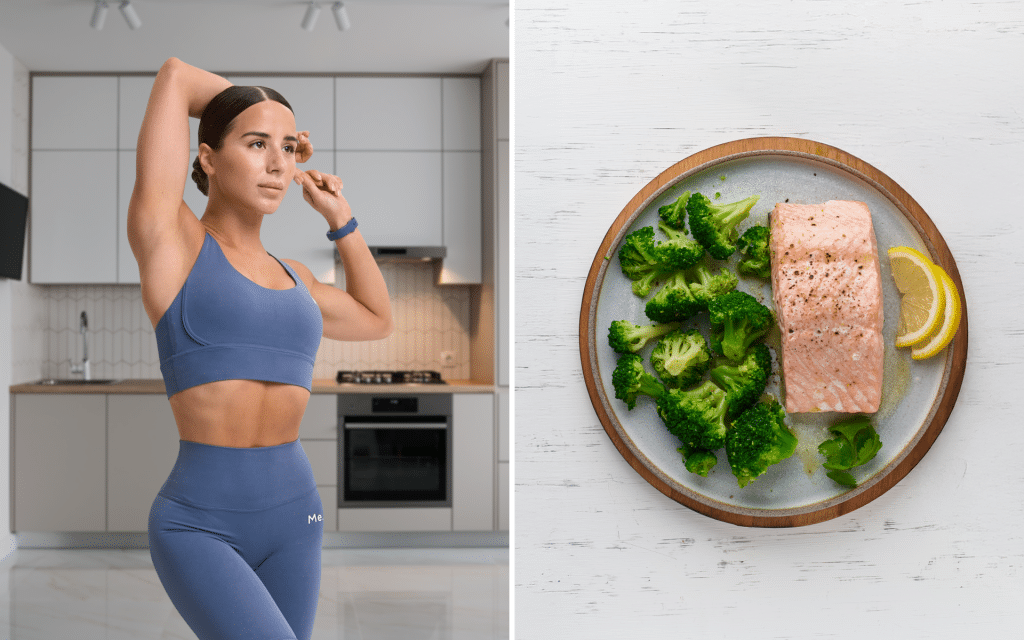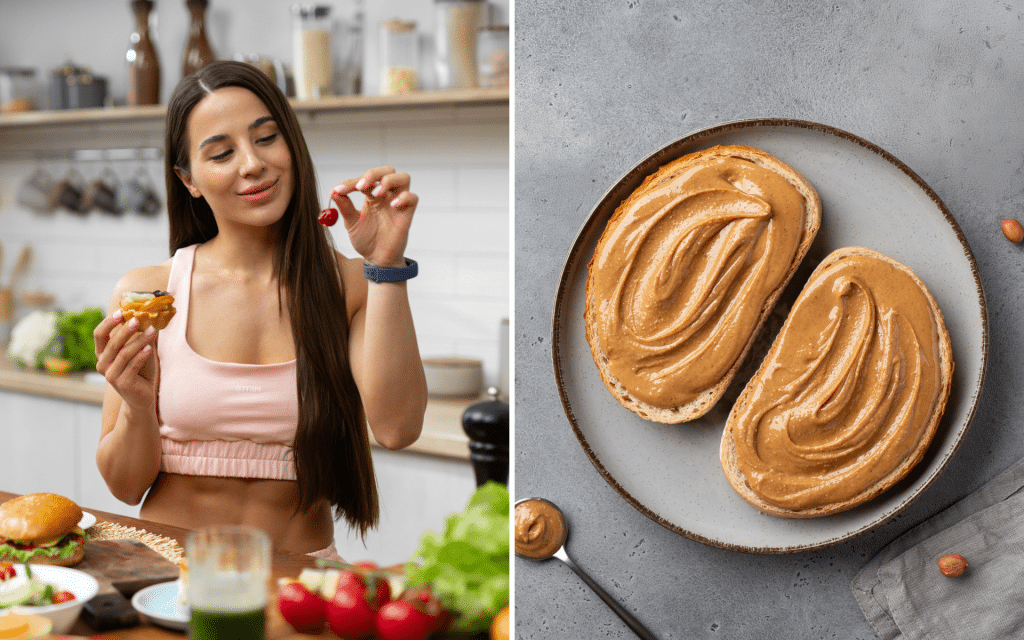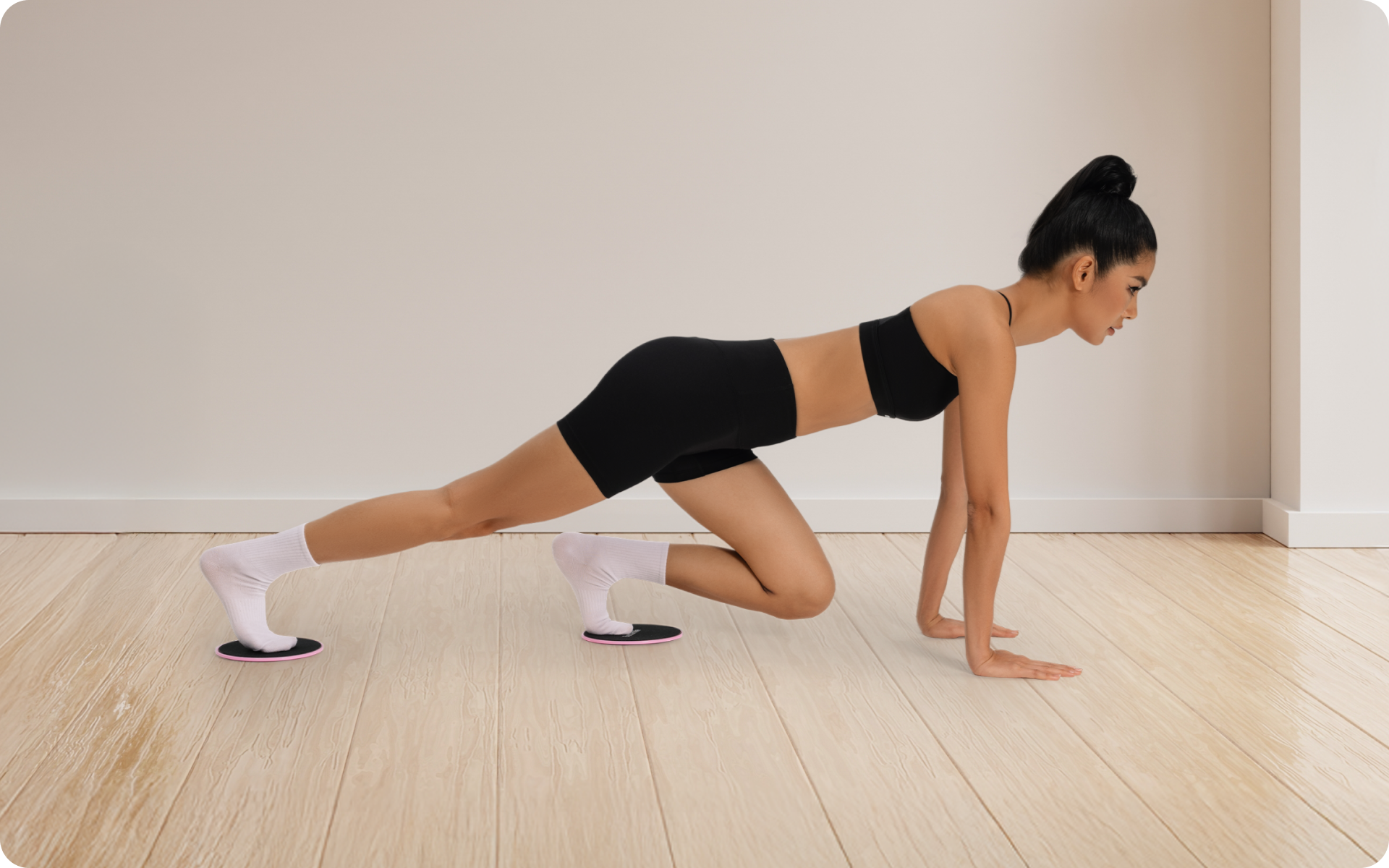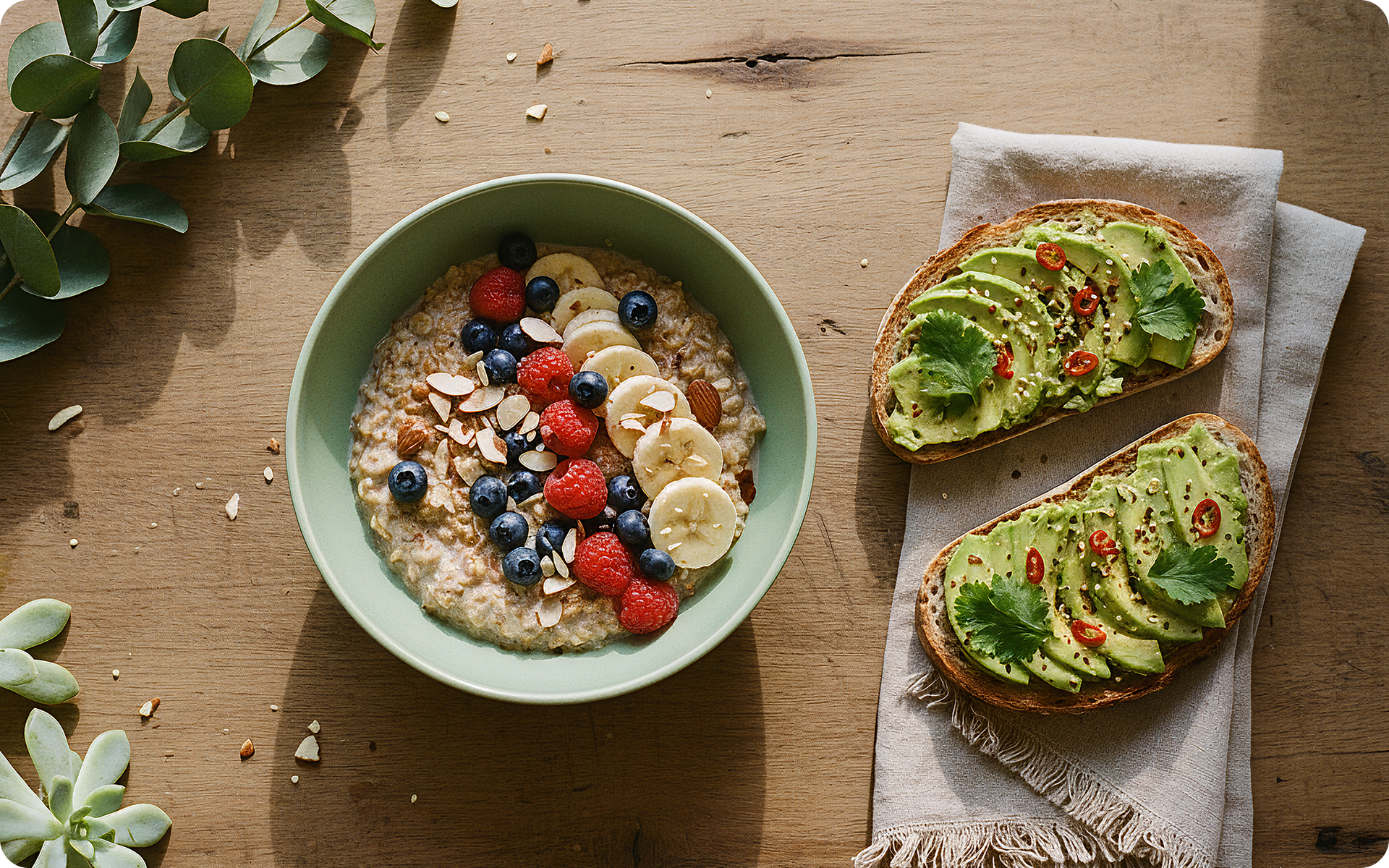When it comes to losing weight and gaining muscle, there is no one-size-fits-all approach. There has never been. However, there is one factor that remains constant: Your body can lose weight and gain muscle simultaneously. Interesting, right?
Also, regardless of your fitness goal, you need to understand how to balance between diet and exercise. Doing this will ultimately ensure the best results in your fitness plan. An essential aspect of your dietary fitness plan is related to macronutrients, aka macros. Understanding what they are and learning how to optimally consume them will significantly help you achieve your goals.
What Are Macros?
Simply put, macronutrients are the primary nutrients that are crucial for keeping your body healthy and moving. These nutrients give you energy in the form of calories, which are essential in supporting basic bodily functions.
The three macronutrients are proteins, carbohydrates, and fats. This means that it doesn’t matter what your dietary plan is; you’re always getting at least one macronutrient. You wouldn’t be able to survive if you weren’t. Apart from supporting your essential bodily functions, macros also play a role in weight loss and muscle gain.
Next, let’s look at each macronutrient in detail and the role they play in your fitness goals.
Proteins
Proteins are arguably the most important macro for muscle gain and weight loss. They have long been a popular choice for bodybuilders and dieters looking to gain muscle, and for good reason too. Proteins are the building blocks of muscles and organs and it makes up part of every cell in the body.
Apart from that, proteins also form the hormones and enzymes responsible for supporting primary life functions and building and repairing damaged tissues. So why are proteins one of the ideal macros for weight loss and muscle gain? What roles do they play? Let’s find out.
- Proteins Increase Satiety, Making You Crave Fewer Calories
Better satiety means reduced hunger and appetite. According to this study, proteins can help you achieve this through different mechanisms (1). This means that when you eat more proteins, you’ll find yourself consuming fewer calories.
- Proteins Affect the Levels of Weight Regulating Hormones
The hypothalamus in your brain is responsible for actively regulating your weight. It processes important signals from hormonal changes in response to feeding. This is how it determines when and how much you eat.
Increased protein intake enhances the production of satiety hormones like peptide YY and cholecystokinin. Conversely, it reduces the levels of ghrelin, the hunger hormone (2). This has the effect of causing a significant reduction in how often you feel hungry and, by extension, how often you eat (3). And so, the less you overeat, the fewer calories you take in, and the faster you lose weight.
- More Calories Are Burned When Digesting and Metabolizing Proteins
It takes energy to digest and metabolize food that we eat in a process known as the thermic effect of food (TEF). Proteins have a higher TEF (20-30%) compared to carbohydrates (4). This means that more calories will be used to digest proteins compared to other macros.
- Proteins Prevent Muscle Loss While Increasing Cellular Metabolism
Losing weight is not always synonymous with losing bodyfat. When you lose weight, your muscle mass also tends to be reduced too. However, most people really don’t want to lose their muscle mass. What you want to lose is bodyfat both subcutaneous and visceral. If you undereat too drastically, your metabolism will ultimately be reduced in what is known as starvation mode (5).
Eating more protein reduces muscle loss while building up more muscle (6). More muscle will ultimately keep your metabolism high. This particular attribute makes it the most preferred macro for weight loss and muscle gain for men.
Reasons why BetterMe is a safe bet: a wide range of calorie-blasting workouts, finger-licking recipes, 24/7 support, challenges that’ll keep you on your best game, and that just scratches the surface! Start using our app and watch the magic happen.
Carbohydrates
Carbohydrates include starch, sugars, and fibers. These macros are our bodies’ most preferred source of fuel. Carbs are ultimately broken down into glucose which is the body’s most efficient source of energy. Our muscles and tissues then use glucose to power themselves through every physical activity.
That said, can you use these macros for weight loss and muscle gain? Here are the roles that carbs play when it comes to losing weight and gaining muscle.
- Carbs Prevent Muscle Degradation
Glucose from carbohydrates is stored as glycogen. This reserve is necessary for ensuring your organs and tissues have enough glucose for optimal performance.
When this reserve is inadequate, your muscles can be broken down into amino acids and converted to glucose. What this means is that your body will break down your muscles to generate energy in the absence of glycogen or a steady supply of fat (7).
Severe muscle loss is associated with poor health and a higher risk of death (8). Your muscles, therefore, need to be in mint condition during your weight loss regimen, and carbs will make sure they are.
- Carbs Provide Muscle Glycogen
Remember, weight loss is all about diet and exercise that creates a regular caloric deficit. As much as you need to watch your diet, you should also occasionally work out. Muscle glycogen is used up whenever you are working out to provide you with energy (9).
- Fiber Reduces Your Belly Fat and Appetite
Fiber is one form of carbohydrate. Soluble fiber is a powerful appetite suppressant. This means that you are likely to take in fewer calories with adequate fiber intake, resulting in weight loss (10). Also, the gut bacteria responsible for breaking down soluble fiber produce short-chain fatty acids during fermentation. These fats help reduce belly fats by increasing the fat burn rate and decreasing fat storage (11).
Fats
Keto diets have become increasingly popular mainly because they involve eating large amounts of fats and very low amounts of carbs. It may seem counterintuitive to encourage increased intake of fats when trying to lose weight, but it’s not. Well, as long as you’re prioritizing healthy fats.
Fats help our bodies absorb vitamins A, D, E, and K. Additionally, they form a crucial part of our cell membrane structures and make other molecules like hormones. Fats are the most energy-dense macronutrients, so our bodies turn to them when there’s a glucose shortage.
Here are some of the roles that fats play when it comes to weight loss and muscle gain.
- Fats Fill You Up for Longer Periods
It takes more time to digest fats compared to other macros. This will leave you feeling full, eventually creating the scenario of reduced cravings and reduced total calorie intake (12). A small portion of food containing fats will be more satisfying as compared to the same portion size without fats. Generally speaking, the fewer calories you take in each day, the faster you will achieve your weight loss goals and prioritizing a healthy intake of fats can help you manage your daily calorie intake for optimal results..
- Fats Help in Regulating Blood Sugar Levels
You’re probably wondering what blood sugar has got to do with losing weight. Blood sugar levels affect insulin production, affecting your cravings, mood, and food choices. Healthy fats keep your blood sugar balanced throughout the day, keeping your cravings in check (13).
- Fats Taste Good
It’s no lie that everything tastes better with a pat of butter on the side. If fats will help you enjoy some fresh salad or roasted vegetables, then that is a win-win. Also, adding fats to a meal full of fat-soluble vitamins from vegetables makes it a more filling and tasty meal.
So let’s face it. Not all weight-loss diets can be considered tasty. If fats can help you tolerate the dieting process effectively, what’s the harm in that? Also, for vegetarians, this may make fats the ideal macro for weight loss and muscle gain. Nothing makes veggies tastier than a healthy but tasty fat-based dip, right?
Each macronutrient plays a role when it comes to weight loss and muscle gain. However, what are their ideal proportions, and how should you eat them to realize their full benefits?
Read more: The Newbie’s Guide To High-Protein Foods For Muscle Building
What Is the Best Macro Ratio for Fat Loss?
The best macronutrient ratio for fat loss can vary depending on individual needs and goals, but here are some common recommendations:
- Moderate Carb, High Protein, Moderate Fat: A typical suggestion is 30-40% of calories from carbohydrates, 25-35% from protein, and 20-30% from fats.
- Higher Protein Focus: Some experts recommend focusing on a higher protein intake, around 1.6 to 2.4 grams per kilogram of body weight, to support fat loss and muscle maintenance.
- Balanced Approach: Another approach is 40% carbohydrates, 30% proteins, and 30% fats, which can be a good starting point for many.
Ultimately, the best ratio depends on your body type, activity level, and personal preferences. It’s often beneficial to experiment and adjust based on how your body responds.
How to Calculate Macros for Weight Loss and Muscle Gain
Keeping track of your macros is crucial if you want to achieve your fitness goals. However, if you’re new to this, you probably won’t know how to count macros for weight loss and muscle gain. Worry not, we’ve got your back.
First off, here are some tips that will guide you through the process:
- Always Maintain a Reasonable Calorie Deficit
The logic is simple. Go too big on the caloric intake, and your muscles won’t show due to increased body fat. Go too small on the intake, and the rate at which you lose fat will be extremely slow.
- Have a Comprehensive Weight Training Program
These programs will ensure that you’re actively breaking down muscle tissues and allowing them time to repair. This will help you come out of the program with more robust and bigger muscles.
- Include Raw Materials for Muscle Growth in Your Diet
Always make sure you get enough protein to enhance protein synthesis while ensuring your intake outweighs protein breakdown.
- Make Sure Your Hormonal Levels are balanced
Losing fats and muscle depends greatly on your hormones. Hormones are responsible for releasing fat stores and building muscle tissues. The best way to achieve a healthy hormonal balance is by eating a nutrient-dense diet, getting plenty of sleep, and exercising.
When it comes to weight loss, progress is made by inches, not miles, so it’s much harder to track and a lot easier to give up. The BetterMe: Health Coaching app is your personal trainer, nutritionist, and support system all in one. Start using our app to stay on track and hold yourself accountable!
Now let’s look at how you can calculate your macros for muscle gain and weight loss.
1) Calculate Your Basal Metabolic Rate (BMR)
Your BMR is the number of calories you use daily at rest. Many factors, including your biological sex, activity level, and weight, influence the final figure you get when calculating your BMR. The most common way of estimating your BMR is by using the Harris-Benedict equation.
This formula factors your weight, height, age, and gender to get your BMR. Here’s how you can get yours:
655 + (4.35 × your weight in pounds) + (4.7 × your height in inches) – (4.7 × age)
Using a six-foot-tall 30-year-old male weighing 187 pounds as an example, the result will be 1665.85 calories. This means that his approximate daily calorie burn at rest is 1665 calories. This is the bare minimum your body needs to maintain basic life functions. Going below this will result in reductions in metabolism.
2) Work Out Your Activity Levels
Next, you must factor in your current activity levels. You do this by multiplying your total calorie count obtained in the first step by the following factors:
- If you get little to no exercise in a week: 1.2
- If you get light exercises a few times a week or exercise a few times a week: 1.375
- If you exercise moderately 3-5 times in a week: 1.55
- If you exercise heavily in a week: 1.725
Let’s assume that the male in our example exercises moderately, three times a week. We then take his BMR of 1665 calories and multiply it by 1.55 to give his total daily energy expenditure (TDEE). This gives a value of 2580.75 calories.
His TDEE is the number of calories he needs daily to maintain his daily weight. So to lose weight, you’ll need to cut that number by 15% for manageable weight loss. To put in some weight, bump up that number by the same amount.
3) Figure Out What Your Macro Balance Is
The next step involves determining how you’ll split those calories to meet your fitness goals. A popular and generally recommended ratio is 40/40/20 for protein, carbs, and fats, respectively. It is important to note that there is no universal ratio, but experts advise that proteins take priority when muscle building is the primary goal.
4) Work Out the Grams for Each Macro
Incorporating the 40/40/20 ratio in the dietary plan of our male example will give:
- Proteins: 2580 × 0.40 = 1032 calories
- Carbohydrates: 2580 × 0.40 = 1032 calories
- Fats: 2580 × 0.20 = 516 calories
Next, determine the amount in grams for each macro. To do that, divide the figures by the specific calories per gram in each macronutrient. The figures are 9 calories for 1 gram of fat, 4 calories for 1 gram of protein, and 4 calories for 1 gram of carbohydrates. Our male example will therefore have a diet looking like this:
- Proteins: 1032 calories ÷ 4 = 258 grams
- Carbohydrates: 1032 ÷ 4 = 258 grams
- Fats: 516 ÷ 9 = 57 grams
Read more: Is the Plate Method for Weight Loss Effective?
5) Implement Your Dietary Plan
Now you know how to calculate your macros. The only thing left is the fine-tuning of your dietary plans to fit your goals. Mapping out your meals does not mean being rigid and overly meticulous in your approach. Remember, macro-counting is a flexible dieting approach.
The occasional parfait won’t throw you off course as long as you keep it, well, occasional. Tracking and calculating your macros before eating may look like a daunting task. Scratch that; it probably is. However, macro dieting does not have to be a long-term venture.
Done correctly, macro tracking will always ensure you’re eating healthy while pursuing your fitness goals. The bonus? You’ll always be full without the constant fear that you’re consuming extra calories. When it comes to macro dieting, you can never overeat!
No, consuming 40% of your daily calories from protein is not necessarily too much for everyone, but it depends on your overall calorie intake, health status, health goals, and physical activity level. A higher protein intake can be beneficial for fat loss and muscle gain because it helps preserve lean muscle mass, boosts satiety, and supports recovery. However, aiming for 40% protein might be unnecessary for most people unless you’re engaged in very rigorous training or have specific dietary needs. For most individuals prioritizing muscle growth, a protein intake of 1.6-2.4 grams per kilogram of body weight is sufficient (14). Consistently consuming too much protein could lead to digestive discomfort or could displace other essential nutrients like healthy fats and carbohydrates. It’s always wise to consult a dietitian to help customize your protein needs. To gain muscle while losing fat, you should aim for 1.6 to 2.4 grams of protein per kilogram of your body weight per day. For example, if you weigh 70 kilograms (154 lbs), this means consuming 112 to 168 grams of protein daily (14). This range ensures your body has enough protein to repair and build muscles after workouts while aiding fat loss by maintaining a calorie deficit and managing your appetite. High protein intake also keeps your metabolism active as digesting protein requires a considerable amount of energy (thermic effect of food). Combine this with strength training to maximize muscle retention and fat loss. Adjust your intake based on workout intensity and how your body responds. A fat macro of 20% can be on the lower end but is generally acceptable if your diet is carefully planned. Dietary fats are crucial for hormone production, brain function, and absorbing fat-soluble vitamins (A, D, E, and K) (15). While 20% fat might work for some individuals, especially those following higher protein or carb-focused diets, it could be too low for others, depending on their overall health, physical activity levels, and dietary preferences. For most adults, 20-35% of your daily calories from fat is a good range. If you notice low energy levels, hormone imbalances, or issues with recovery, increasing your fat intake slightly (e.g., to 25-30%) could help. The 20/30/50 rule for macros refers to dividing your daily calories into 20% fats, 30% proteins, and 50% carbohydrates. This ratio is often used as a general guideline for weight loss or maintaining balanced energy levels while still benefiting from muscle repair (via protein) and sustained energy (via carbs). For example, if you eat 2,000 calories a day, this breaks down as: While this approach can work for many, individual factors like exercise, health goals, and personal preferences may require you to tweak these ratios for optimal results. Always prioritize nutrient-dense food sources for all macros to support overall health.Frequently Asked Questions
Is 40% protein too much?
How much protein should I eat to gain muscle and lose fat?
Is 20% fat macro too low?
What is the 20 30 50 rule for macros?
The Bottom Line
Losing weight and gaining muscles is not always about exercise. Sometimes, you need to make a few tweaks in your diet to achieve this—specifically your macro diets.
Macros are an essential piece of the puzzle when it comes to leading a healthy life. They technically control how our bodies grow and develop. Eating them in the right quantities and combinations can lead to phenomenal muscle growth and weight loss. Give macro dieting a shot today and witness a hassle-free way of achieving your fitness goals.
DISCLAIMER:
This article is intended for general informational purposes only and does not serve to address individual circumstances. It is not a substitute for professional advice or help and should not be relied on for making any kind of decision-making. Any action taken as a direct or indirect result of the information in this article is entirely at your own risk and is your sole responsibility.
BetterMe, its content staff, and its medical advisors accept no responsibility for inaccuracies, errors, misstatements, inconsistencies, or omissions and specifically disclaim any liability, loss or risk, personal, professional or otherwise, which may be incurred as a consequence, directly or indirectly, of the use and/or application of any content.
You should always seek the advice of your physician or other qualified health provider with any questions you may have regarding a medical condition or your specific situation. Never disregard professional medical advice or delay seeking it because of BetterMe content. If you suspect or think you may have a medical emergency, call your doctor.
SOURCES:
- Protein, weight management, and satiety (2008, sciencedirect.com)
- Hormonal Regulators of Appetite (2008, ijpeonline.biomedcentral.com)
- The role of protein in weight loss and maintenance (2015, sciencedirect.com)
- Effects of protein quantity and type on diet induced thermogenesis in overweight adults: A randomized controlled trial (2019, sciencedirect.com)
- Metabolic Slowing with Massive Weight Loss despite Preservation of Fat-Free Mass (2012, nih.gov)
- Increased protein intake reduces lean body mass loss during weight loss in athletes (2010, nih.gov)
- The Effect of Carbohydrates on Ammonium and Keto Acid Excretion during Starvation (n.d., nih.gov)
- Associations of Muscle Mass and Strength with All-Cause Mortality among US Older Adults (2019, nih.gov)
- Coingestion of Carbohydrate and Protein on Muscle Glycogen Synthesis after Exercise: A Meta-analysis (2021, journals.lww.com)
- The effect of fiber on satiety and food intake: a systematic review (2013, nih.gov)
- The role of short-chain fatty acids in the interplay between diet, gut microbiota, and host energy metabolism (2013, jlr.org)
- Fats and Satiety (2010, nih.gov)
- Dietary fats and prevention of type 2 diabetes (2010, nih.gov)
- Recent Perspectives Regarding the Role of Dietary Protein for the Promotion of Muscle Hypertrophy with Resistance Exercise Training (2018, nih.gov)
- Weighing in on Dietary Fats (2011, nih.gov)













